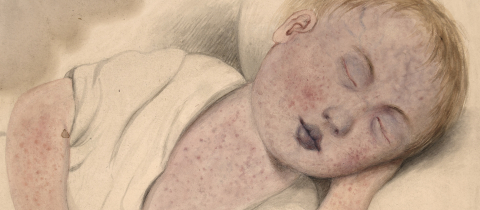Pfizer and BioNTech’s RNA vaccine against COVID-19 has just been authorized by Health Canada. There will be many Internet whispers, half-truths and lies about how it works and how safe it is, so let’s delve into the recently released analysis of data from over 36,000 people who participated in the clinical trial.
There is safety in these numbers
A 53-page report from the U.S. Food and Drug Administration was recently released that summarizes the data Pfizer submitted from its large clinical trial of the vaccine. This vaccine was compared to a saline placebo injection and participants did not know which one they got. Two shots, three weeks apart, are necessary to get full protection. Mild side effects were reported and anyone who has been vaccinated will be familiar with these, although they seem more common than with a flu vaccine. Roughly the same number of people quit the trial due to side effects in each group (37 in the vaccine arm and 30 in the placebo arm). The most common were a reaction at the site of injection (reported by 5 in 6 people), fatigue (2 in 3), headache (a little over half), muscle pain (2 in 5), chills (1 in 3), joint pain (1 in 4), and fever (1 in 7). This is not worrisome in itself, but it may lead to a significant number of people having to take a day off from work to feel better and it may unfortunately influence people’s decisions to return for that second shot.
Less than 0.5% of people in either group had a serious side effect (beyond horrible things like life-threatening conditions and permanent damage, this broad category also includes hospitalizations, seizures and other serious medical events). It’s important to highlight that participating in a clinical trial does not pause the development of other illnesses. For example, given a large enough cohort of participants, someone is bound to get appendicitis during the trial. What researchers look for are serious events a) that are seen at a frequency higher than expected in the vaccine group and/or b) that could plausibly be caused by the vaccine given our understanding of biology and medicine.
For example, 64 people who received the vaccine (and 6 who received the placebo) had temporarily enlarged lymph nodes in the trial, plausibly related to the vaccination. This is also seen, for example, when we’re sick with an infection. Meanwhile, four people in the vaccine group developed a temporary weakness or paralysis of facial muscles, which sounds scary but the frequency at which it occurred is what we see in the general population. Still, doctors will keep an eye out on these rare events as vaccination begins. Very, very rare complications can’t typically be seen within a clinical trial (because you can only ever recruit so many participants), but these events will be monitored moving forward.
Like diseases, deaths are not miraculously suspended in people who join a clinical trial. Two participants in the vaccine group died during the trial (one from cardiac arrest and the other from arteriosclerosis, AKA a hardening of the arteries) and four participants died in the placebo group. These numbers are in keeping with what is expected to occur naturally.
Not only does the vaccine look safe but its efficacy at preventing symptomatic cases of COVID-19 is remarkable. In the trial, the vaccine had an efficacy of 95%, meaning that 8 people who received the vaccine went on to develop symptoms of COVID-19 and to be confirmed as having caught the virus via laboratory testing versus 162 people who were injected with the placebo. This is good news but it leaves a lot of unknowns. We do not have enough data on severe cases of COVID-19 requiring hospitalization to know if the vaccine is efficacious at preventing those, nor do we know if this vaccine can prevent the spread of the virus by people who do not show symptoms. We also do not know how long the immunity granted by the vaccine will last, though we also do not know the duration of the immunity developed after contracting the virus itself. Still, given the urgency of the situation, these results on vaccine efficacy are quite stunning.
There are also unknowns when it comes to the risk of the vaccine, and proper context is very important so as not to feed irrational fears. Too few participants under the age of 16, pregnant or immunocompromised took part in this trial to gather reliable safety data for these groups of people in particular. Also, as public vaccination began in the United Kingdom, two cases of allergic reactions led their regulator to issue a warning that people with a “significant” history of allergic reactions should not receive the Pfizer vaccine out of precaution. In the trial itself, 137 people who got the vaccine reported an allergy-type reaction versus 111 in the placebo group. These numbers are small compared to all trial participants (a little more than half of a percent) so it is unclear at this point how meaningful this all is.
A vaccine like Pfizer’s makes use of a relatively new technology which merits an explanation, as it has triggered a bevy of metaphorical horses to leave the barn in a panic.
How the Pfizer vaccine works
Pfizer’s vaccine ships in multi-dose vials that are kept between -60 and -80 degrees Celsius. They have to be thawed and diluted with a sterile saline solution, which yields five doses. This vaccine is injected into the shoulder muscle (just like the flu shot). So what are you getting injected with?
The cargo at the heart of this vaccine is protected by a bubble of fat about the same size as the coronavirus (so you can’t see these bubbles with the naked eye or even with a regular microscope). The vaccine also contains salts that act to keep the pH of the solution close to our own and table sugar (sucrose) that prevents these fat bubbles from sticking to each other while frozen. The vaccine has no preservative, so if you hear fearmongers saying that the vaccine contains thimerosal (which does not cause autism), you’ll know it’s misinformation at best, a lie at worst.
Now what is this “cargo” inside the tiny bubbles of fat? It’s a tiny stretch of fragile RNA that is a set of instructions for the cells that receive them to manufacture the coronavirus’ infamous spike protein. RNA is not foreign to our bodies; it’s one of the pillars of life. Our DNA, a vast archive of plans to make proteins, has stretches called genes that get transcribed into this ephemeral copy called RNA (specifically messenger RNA in this case). The RNA is exported out of the nucleus of our cells (a sort of command centre with limited access) and into the main playground of our cells (known as the cytosol). There, RNA is read and the protein it codes for is assembled before the RNA is disposed of. This RNA vaccine is just one more bit of messenger RNA that will get delivered to some of our cells. These cells will start producing the virus’ spike protein and either display it at their surface or release it when they die. Either way, our immune system will recognize this protein as foreign and will develop a memory of it to protect us from the virus should we encounter it.
RNA vaccines did not appear overnight. Scientists have been developing them since the early 1990s. Unfortunately, the RNA that was being used would often trigger an undesirable response from the immune system, so no such vaccine aimed at humans made it to market. But now scientists have figured out how to avoid this. It turns out that some of the letters that make up the RNA code--A, U, C, G--get all sorts of add-ons and modifications by our bodies, a bit like someone changing the tires on their car or adding stripes along the body. By using some of these modified bases--again, naturally occurring in the body--scientists were able to avoid these undesirable responses with RNA vaccines and also to make them a little bit more stable, as regular RNA often disintegrates when we just look at it (as the old science joke goes).
But because the vaccine contains genetic material and because it was developed very quickly, fears abound that must be addressed.
The fear of the unknown
There is no plausible way in which this RNA vaccine could alter our genome. The RNA is degraded fairly quickly. It has no mechanism by which it can enter the nucleus of our cells (the limited-access command centre that contains most of our DNA), and no way for it to be turned back into DNA and integrated into our genome. Some viruses, like HIV, carry a protein called a reverse transcriptase that allows them to do that, and the flu virus has its genome tied to a special kind of protein that allows it to be transported inside our cell’s nucleus, but none of these are present within an RNA vaccine. Moreover, if spike protein RNA could wreak havoc on our genome, everyone who caught the coronavirus would be affected, because their cells would have been exposed to the virus’ RNA. (For a thorough examination of this fear, I highly recommend this article which explores various scenarios and provides answers rooted in molecular biology.)
There is absolutely no evidence that Pfizer’s vaccine (or any COVID vaccine based on the virus’ spike protein) will make us sterile. This bit of misinformation would have you believe that the spike protein is just the same as a protein called syncytin-1, which our body needs to make the placenta. While they are both proteins that help with cellular membrane fusion, they are absolutely not the same. The flu vaccine also contains a viral fusion protein and it doesn’t hamper pregnancies. This is pseudoscientific alarmism.
Some are concerned about the vaccine backfiring and resulting in vaccine-enhanced disease. This is when our immune system is confronted with a virus or a vaccine, prepares us poorly for a rematch, and we get a severe infection when faced with the virus again. This phenomenon is seen when our body encounters a new strain of dengue, for example. Pfizer’s trial data do not indicate a risk for this, but the data is limited. The risk of vaccine-enhanced disease with this coronavirus is theoretical at the moment, and longer follow-ups will be needed to see if this is something worth worrying about.
Finally, I keep hearing that the vaccine has been rushed and that corners were cut. There are many reasons why we have an authorized vaccine to a new disease so quickly, none of which imply a lack of rigour. The investment of money and resources was unprecedented. The more people try to solve a problem, the more likely someone is to find a solution. Testing a new vaccine in humans usually entails waiting: waiting to raise enough money to start a trial, waiting to recruit enough participants, waiting for enough of these participants to naturally contract the disease to see if the vaccine is efficacious. Because of the urgency of the situation and how widespread the virus was in the countries where the vaccine was tested, these delays were cut dramatically short. Moreover, the next phase of a clinical trial is usually not prepped before the results of the previous one are known, since a company would risk wasting precious funds if the results turn out negative; these phases tended to overlap with COVID, which allowed for a shorter time frame.
Also, an RNA vaccine can be quickly synthesized in the lab, whereas the vaccines we are familiar with require much longer manufacturing times. And finally, scientists got lucky. The spike protein turned out to be an excellent target and it paid off.
Scientists, healthcare professionals, and trial volunteers rolled up their sleeves and succeeded at solving this challenging problem. With one vaccine authorized in Canada and more that will be filing for this authorization in the coming months, it is my hope that we can roll up our own sleeves when the time comes.
Take-home message:
- Pfizer’s COVID-19 vaccine is very effective at preventing symptomatic cases of the disease and it looks safe, although minor side effects like a sore arm and fatigue are common
- There is no plausible mechanism by which this vaccine or any other RNA vaccine could alter our genome
- The speed at which this vaccine came to be is due to massive investments of money; not having to wait for funds to be granted; enough people volunteering to participate very quickly; how much faster an RNA vaccine can be synthesized compared to other technologies; and luck that the spike protein was a good target







